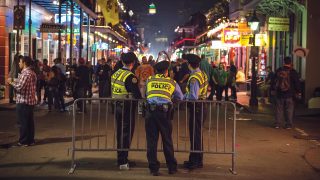
In fall 2023, American Police Beat published an article titled “Diversity in law enforcement: Can it improve police-community relations?” by Dr. Gene Ira Katz. The article highlighted the 2015 report of the President’s Task Force on 21st Century Policing, which recommended enhancing police–community relations by proportionately increasing ethnic and racial diversity in police agencies. However, as Dr. Katz suggested, increasing diversity does not necessarily create or promote change in law enforcement regarding improving community relations. Dr. Katz recommends focusing more on cultural diversity training, or “implicit bias training,” as one solution to the proverbial dilemma. It is worth noting that many states already require implicit training before issuing peace officer certificates. In California, police officers must complete 16 hours of implicit bias and cultural diversity training before they receive their POST certification as peace officers.
Agencies must start by examining their internal policies and procedures to determine if there is a need to replace them with more evidence-based practices.
Statistics show police agencies have increased diversity among their rank and file. According to the U.S. Bureau of Labor Statistics (2022), African Americans, Latinos and Asians have increased their presence in the “protective service occupations,” which include police, sheriffs, corrections and private security. A study documenting historical data from 2003 to 2019 showed that diversity increased by 14.7%. However, research shows that diversity does not necessarily equal better police practices or fairer treatment of citizens. These findings were validated by the death of Tyree Nichols, a Black citizen, who was pulled over for a traffic violation and subsequently arrested and beaten while in custody. He died three days later in the hospital. All officers involved in the beating were Black. An interesting dichotomy arises from these two opposing points: a more diverse police workforce does not necessarily lead to measurable change in internal culture and procedures related to community relations, but a more diverse police force can positively affect the overall public opinion of the community. Generally speaking, positive public opinion builds trust and confidence, which can translate to legitimacy and public support for long-lasting, meaningful change.
More training, such as implicit bias training, can provide more tools for employees to use in their daily efforts to be more inclusive, expand understanding of cultural differences and help improve daily interactions with diverse populations. However, training can only be an effective transformational tool if employees are willing to transfer their knowledge from theory to application. In July 2020, the NYPD concluded its report titled “The Impact of Implicit Bias Training in the NYPD.” A team of researchers from the Center for Police Research and Policy and the John F. Finn Institute for Public Safety evaluated recent implicit bias training and the effects it had on the NYPD’s 36,000 sworn employees. The immediate effect was significant in the acquisition of new knowledge regarding implicit bias. However, the percentage of actual application of training was significantly lower, with only about 27% of the workforce admitting to only “attempting to use” the new training frequently.
Education, training and other organizational factors such as leadership support can positively affect internal and external relationships. Strengthening community ties should also include an honest and thorough assessment of internal processes, traditions and practices. Social factors such as public opinion, perception, public sentiment and attitudes about law enforcement can change rapidly. These factors are often affected by negative or positive interactions between police and community members. Therefore, law enforcement executives must constantly review processes, procedures and traditions to avoid harboring practices that may result in the next highly publicized questionable use of force. Police processes and procedures are often based on traditions. Many traditions, however, are outdated and often ineffective in providing police services to changing demographics. Traditions make it difficult to bring change and innovation to police agencies. In light of the ever-changing social and political environment in which police operate, it is recommended that these processes and procedures be constantly studied to gain a better understanding of internal ideologies.
There is no single solution or approach for the complexity of the relationship between police and the community. Training, legal updates, education, diversity and awareness are all excellent examples of how police agencies can begin to address the disconnect between changing social conditions in their communities and police procedures and practices. As public demands for police agencies to engage in innovative and effective policing strategies grow, police agencies must start by examining their internal policies and procedures to determine if there is a need to update them or replace them with more evidence-based practices as they continue to improve and strengthen community relationships. Some police agencies have created full-time units that review internal policies and procedures. Their goal is to improve, revise and update procedures and to develop effective community-oriented crime prevention models for modern policing. Researchers compare these units to the business model of research and development units (R&D), generally geared toward renewing current practices and advancing new ones for organizational improvement. Law enforcement executives must continue to explore innovative ways to strengthen community ties and reinforce trust. This may include using evidence-based solutions that may not be traditional but are supported by empirical research.
References
Bond, Brenda J., and Kathryn Gabriele. “Research and Planning Units: An Innovation Instrument in the 21st-Century Police Organization.” Criminal Justice Policy Review, Vol. 29, Issue 1, February 2018. doi.org/10.1177/0887403415624947.
Commission on Peace Officer Standards and Training. Regular Basic Course Training Specifications. post.ca.gov/regular-basic-course-training-specifications.
Dubord, Neil, and Curt Taylor Griffiths. “Creating a Change Culture in a Police Service: The Role of Police Leadership.” Policing: A Journal of Policy and Practice, Vol. 15, Issue 1, March 2021. doi.org/10.1093/police/paz055.
Karp, Steffan, and Henric Stenmark. “Learning to Be a Police Officer: Tradition and Change in the Training and Professional Lives of Police Officers.” Police Practice & Research, Vol. 12, Issue 1, 2011. doi.org/10.1080/15614263.2010.497653.
Katz, Gene Ira. “Diversity in law enforcement: Can it improve police-community relations?” American Police Beat, September 2023. APBweb.com.
Metcalfe, Christi, and Justin T. Pickett. “The Extent and Correlates of Public Support for Deterrence Reforms and Hot Spots Policing.” Law & Society Review, Vol. 52, Issue 2, June 2018. doi.org/10.1111/lasr.12327.
U.S. Bureau of Labor Statistics. “Examining Employment and Diversity in the Protective Service Occupations.” Monthly Labor Review, January 2022. doi.org/10.21916/mlr.2022.1.
Weitzer, Ronald. “American Policing Under Fire: Misconduct and Reform.” Society, Vol. 52, Issue 5, September/October 2015.
Robert Worden, et al. “The Impacts of Implicit Bias Awareness Training in the NYPD.” July 2020. theiacp.org/resources/evaluation-of-implicit-bias-training.
As seen in the October 2024 issue of American Police Beat magazine.
Don’t miss out on another issue today! Click below:





